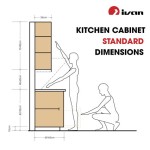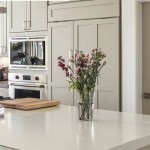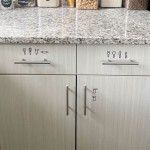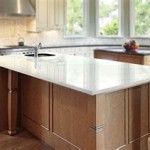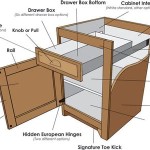Optimizing Storage Tupperware Placement In Kitchen Cabinets
Kitchen storage often presents a significant organizational challenge, particularly concerning tupperware, or reusable food storage containers. Efficient management of these containers within kitchen cabinets is crucial for maintaining an uncluttered and functional kitchen space. Effective strategies involve careful planning of cabinet space, considering tupperware size and frequency of use, and implementing storage solutions tailored to specific kitchen layouts.
The proper storage of tupperware not only enhances cabinet organization but also contributes to the longevity of the containers themselves. Nesting containers effectively, storing lids properly, and regularly auditing the collection can prevent damage, loss of components, and overall disarray. Furthermore, a well-organized tupperware system simplifies food preparation and storage, saving time and reducing frustration in the kitchen.
Assessing Cabinet Space and Tupperware Inventory
Before implementing any storage solution, a comprehensive assessment of available cabinet space is necessary. This involves measuring the height, width, and depth of each cabinet to determine the optimal placement of tupperware and any supplementary storage aids. Different cabinets may be suitable for different sizes and shapes of containers. For instance, taller cabinets can accommodate stacks of larger containers, while shallower cabinets might be better suited for smaller, more frequently used items.
Alongside assessing the physical dimensions of cabinets, it is equally important to evaluate the structural integrity and load-bearing capacity. Overloading shelves with heavy stacks of tupperware can lead to sagging shelves and potential damage. Reinforcement measures, such as adding supporting brackets or utilizing thicker shelving materials, may be required in some instances. A thorough assessment of cabinet construction ensures the safe and effective storage of tupperware.
A detailed inventory of the existing tupperware collection is another critical step. This involves categorizing containers by size, shape, and material. Discarding any damaged, warped, or mismatched pieces is recommended to streamline the collection and free up valuable cabinet space. Identifying frequently used containers versus those used less often allows for strategic placement within the cabinets, prioritizing accessibility for everyday items.
Furthermore, the inventory should account for the corresponding lids of each container. Lids are often the source of organizational challenges, as they tend to become separated or lost. Implementing a dedicated system for lid storage is essential for maintaining order and preventing frustration when matching lids with containers. This may involve utilizing lid organizers, dedicated storage bins, or simply nesting lids within their respective containers.
Implementing Effective Tupperware Storage Solutions
Several storage solutions are available to optimize tupperware placement within kitchen cabinets. These range from simple organizational techniques to specialized storage products designed to maximize space and accessibility. The most effective solution will depend on the specific characteristics of the kitchen cabinets and the individual needs of the user.
Nesting containers is a fundamental space-saving technique. Stacking smaller containers inside larger ones minimizes the overall footprint of the collection. When nesting, it is important to consider the shape and material of the containers. Avoid nesting containers that are likely to become stuck together or that could damage each other due to sharp edges or fragile materials. Round containers generally nest more efficiently than square or rectangular containers.
Utilizing shelf organizers and dividers can significantly enhance cabinet organization. Shelf organizers provide vertical separation, allowing for multiple layers of tupperware to be stored within a single cabinet. Dividers, on the other hand, create compartments within the shelves, preventing containers from sliding around and maximizing space utilization. These organizers come in a variety of materials, including wire, plastic, and wood, and can be selected to match the existing kitchen décor.
Dedicated lid organizers are invaluable for managing tupperware lids. These organizers typically feature slots or compartments specifically designed to hold lids of various sizes. Lid organizers can be mounted inside cabinet doors, placed on shelves, or even stored in drawers, depending on the available space. By keeping lids organized and readily accessible, the time spent searching for matching lids is significantly reduced.
Pull-out shelves or drawers offer an additional layer of convenience and accessibility. Installing pull-out shelves within cabinets allows for easy access to containers stored at the back of the cabinet. This eliminates the need to reach deep into the cabinet, reducing the risk of knocking over other items. Pull-out drawers provide even greater access and visibility, making it simple to locate and retrieve specific containers.
Another consideration is the use of clear containers. Transparent tupperware allows for easy identification of contents without requiring the removal of the lid. This is particularly useful for storing leftovers or ingredients that are frequently used. Clear containers also make it easier to assess the remaining quantity of stored items, reducing the likelihood of running out unexpectedly.
Maintaining Organization and Preventing Accumulation
Once a tupperware storage system is established, maintaining organization is crucial for long-term effectiveness. Regular audits of the collection are necessary to identify and discard any unnecessary or damaged pieces. This prevents the accumulation of excess containers and ensures that the system remains manageable.
Establishing a "one in, one out" rule can help prevent the uncontrolled growth of the tupperware collection. This rule states that for every new container acquired, an existing container must be discarded. This ensures that the overall size of the collection remains constant and prevents the cabinets from becoming overcrowded.
Regularly cleaning out the refrigerator and pantry is also important for maintaining tupperware organization. Discarding old leftovers or expired ingredients frees up containers for new use and prevents the accumulation of forgotten items. This also provides an opportunity to assess the condition of the containers and discard any damaged or stained pieces.
Involving all members of the household in maintaining the tupperware storage system is essential. Educating everyone on the proper placement of containers and lids ensures that the system is consistently followed. Encouraging everyone to return containers to their designated locations after use helps prevent clutter and maintain overall organization.
Finally, consider the practicality of donating excess or unused tupperware to local charities or organizations. This not only declutters the kitchen but also provides valuable resources to those in need. Donating unwanted containers is a responsible and sustainable way to manage the tupperware collection and contribute to the community.
By implementing these strategies, homeowners can effectively optimize tupperware placement within kitchen cabinets, creating a more organized, functional, and efficient kitchen space. Consistent effort and attention to detail are key to maintaining a well-ordered tupperware system and enjoying the benefits of a clutter-free kitchen.
:max_bytes(150000):strip_icc()/Screenshot2022-08-30at5.58.03PM-324476ba7d274ded9d76c2fe225e80fc.png?strip=all)
18 Smart Tupperware Organization Ideas
:max_bytes(150000):strip_icc()/Screenshot2022-08-30at5.50.04PM-97c9331cfeff483d8b11afabb43ad9ea.png?strip=all)
18 Smart Tupperware Organization Ideas

Convenient And Space Saving Cabinet Organizing Ideas Remodelaholic Food Storage Containers Organization Cabinets Diy Kitchen

My Super Simple Tupperware Cabinet Organization Love Renovations

Kitchen Cabinet Organization Taming The Tupperware Sand And Sisal

3 Rules That Revolutionize Tupperware And Food Storage Organization Smallish Home

12 Clever Tupperware Organization Ideas To Keep Clutter At Bay Diy Kitchen Storage Organizing Cabinet
:max_bytes(150000):strip_icc()/Screenshot2022-08-30at5.18.44PM-1ec8f2bd221146a09d37059acda24c5c.png?strip=all)
18 Smart Tupperware Organization Ideas

Organizing Tupperware The Hyper House

Diy Tupperware Organizer Fixthisbuildthat
Related Posts

